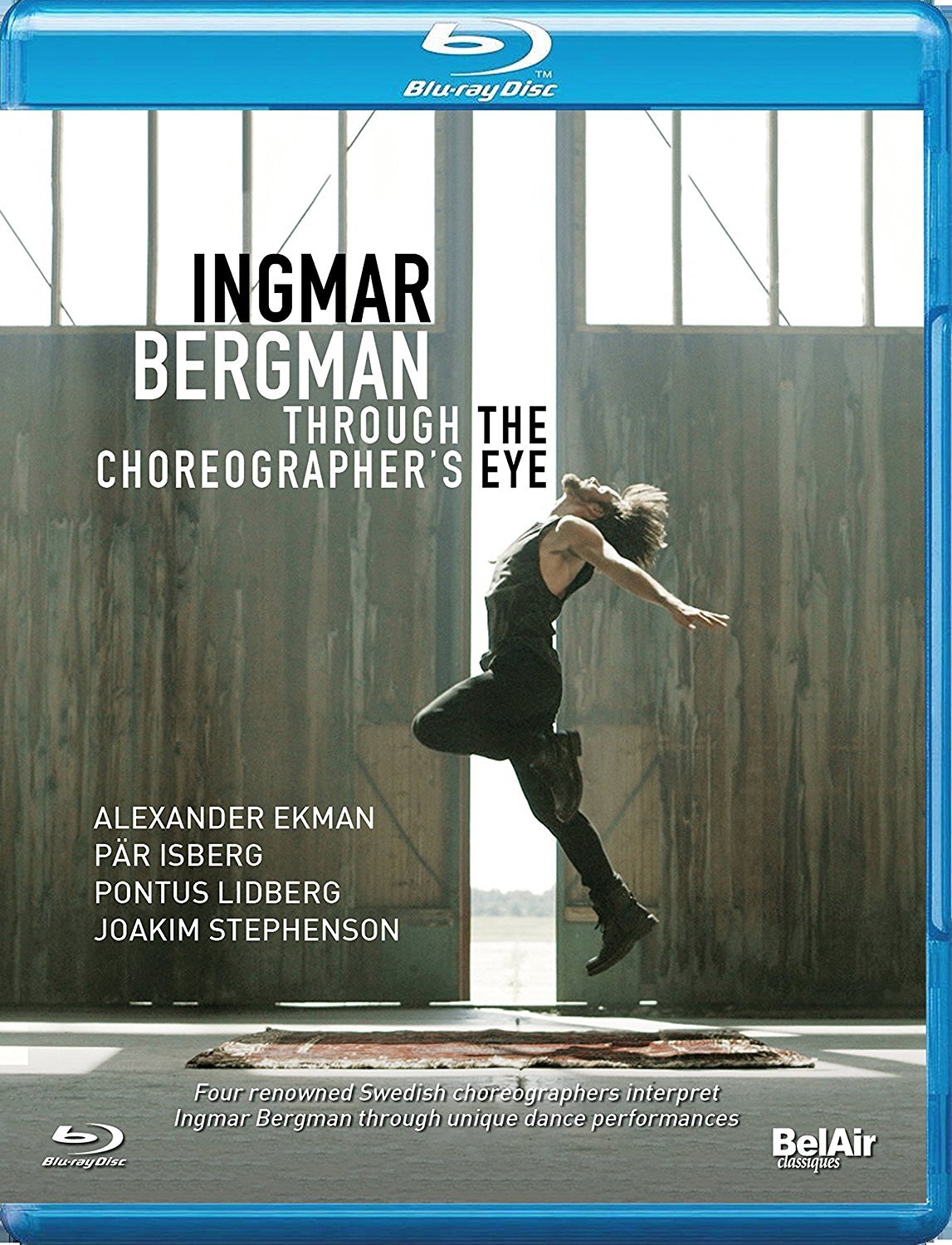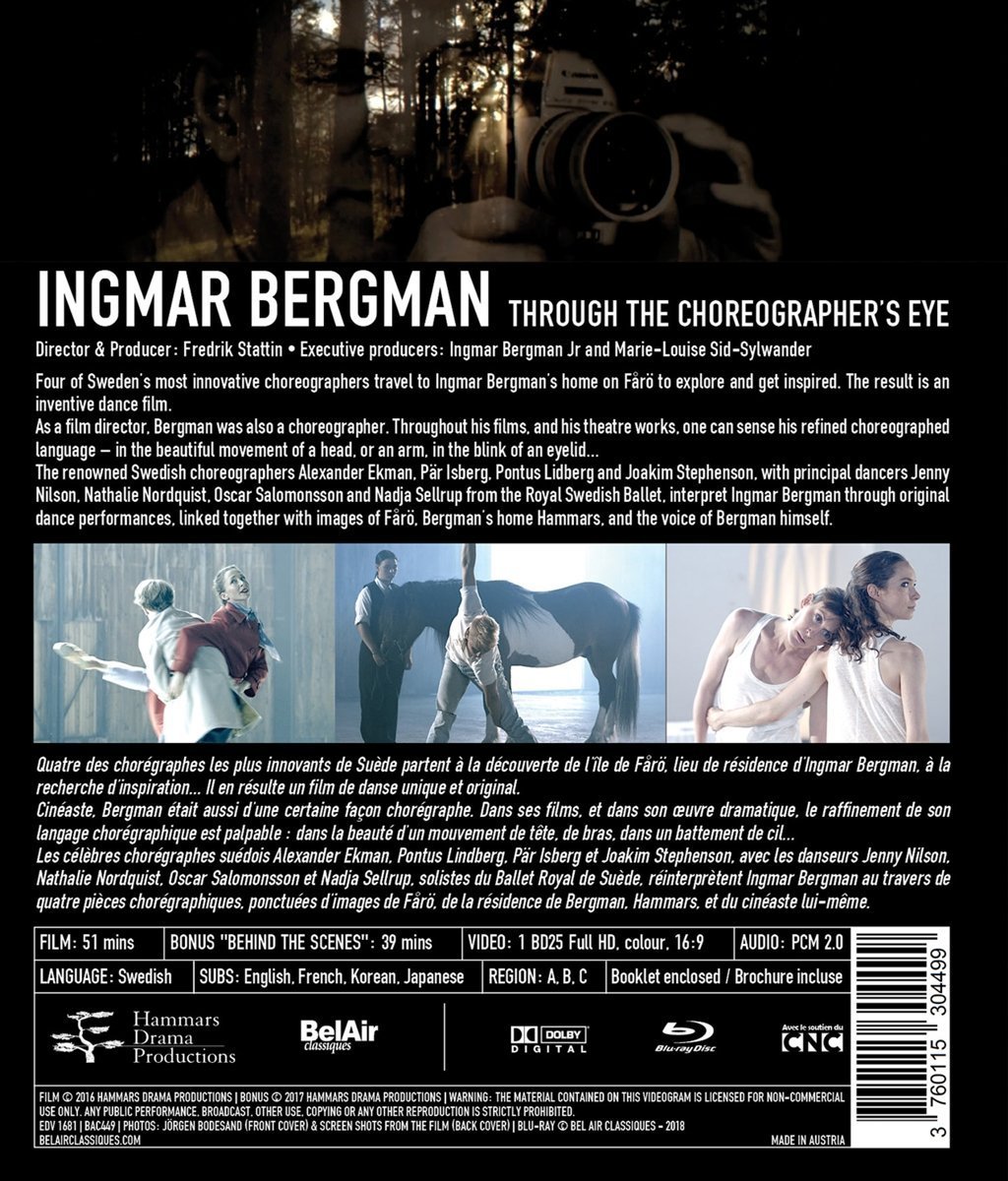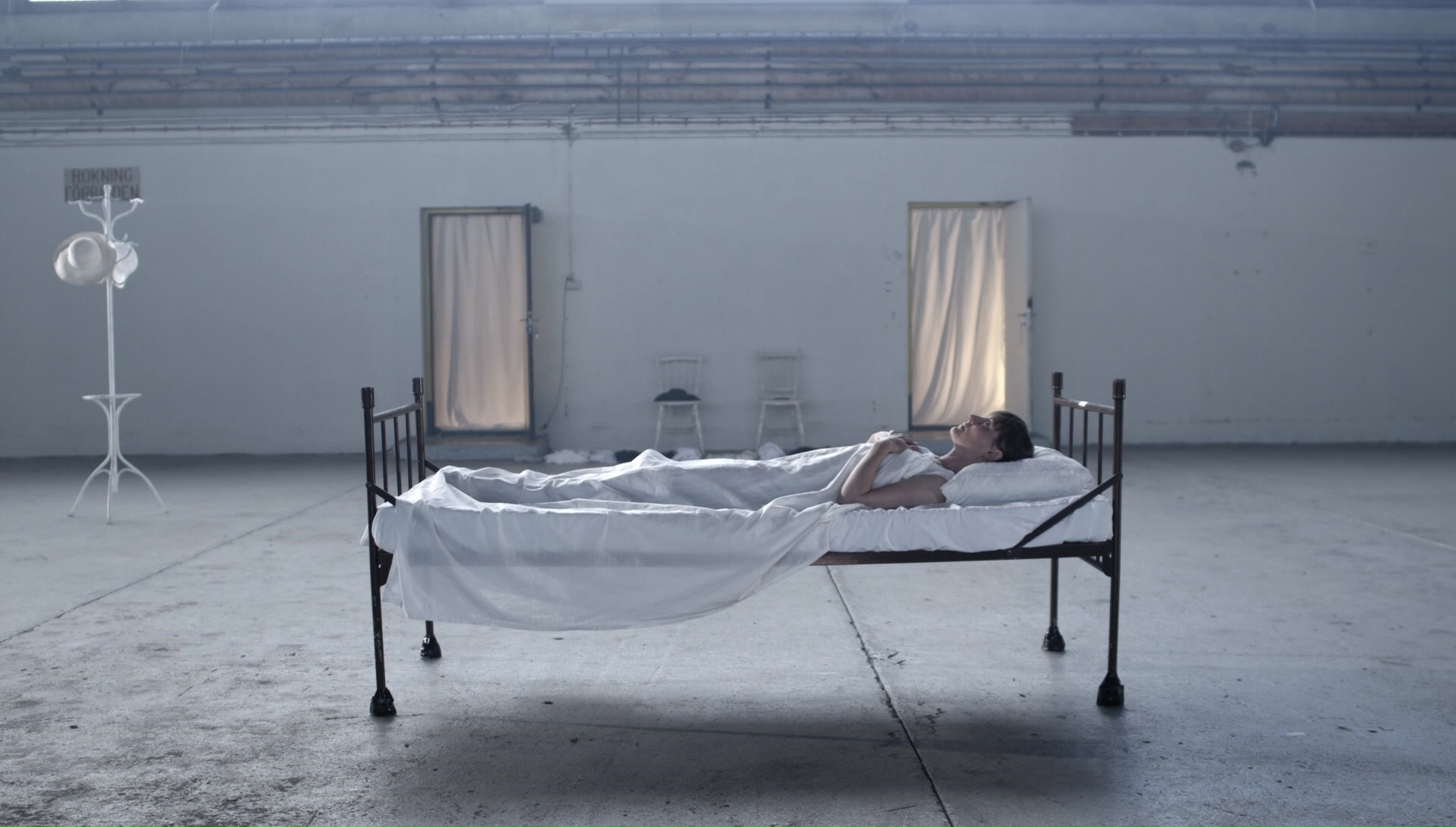

Ingmar Bergman – Through the Choreographer's Eye dance film directed and produced by Fredrik Stattin in 2016 as part of the Bergman Week Festival. Features four short dance pieces (51 minutes total) inspired by the films of Ingmar Bergman and recorded on the Swedish island of Fårö at an dilapidated airplane hanger near Hammers, Bergman's home. There is also an interesting 39-minute "Behind the Scenes" bonus. The executive producers were Ingmar Bergman Jr. and Marie-Louise Sid-Sylwander of the Swedish Royal Ballet. Released 2018, disc has 2.0 PCM stereo sound. Grade: B+
A windmill near Hammers:
A large rock formation, called "The Old Man," on Fårö:
The dance recordings here are all ultra low-cost, informal but elegant, grayed-out, soft focus, partly improvised, innovative, unpretentious, and dead serious expressions of Bergman's existential approach to the raptures and anguish of life. 6 dancers total perform on a slippery, cruelly-hard concrete floor. About 300 audience members sit on folding chairs. All natural light with lots of smoke added. Not much sophisticated gear, but everything needed for smooth images and great sound. In short, the director had everything needed to produce an authentic Bergman tone.
Now let's turn to a few screen shots from each of the four works in the order they were presented:
1. Thoughts on Bergman and Dance. Choreography and dance by Alexander Ekman, script by Ekman and Ingmar Bergman, Jr.; music by Frédéric Chopin, Nocturne No. 2.
Ekman opens by presenting the unifying theme of all the dances. What would Bergman tell the young choreographers if he were alive today?
Then Ekman goes crazy for 8 minutes depicting in dance all the emotions Bergman expressed (or could have expressed) in film:
2. Samband – Band – Saraband. Choreography by Pär Isberg; dancers are Nadja Sellrup and Oscar Salomonsson from the Royal Swedish Ballet. Music from Bach Cello Suites played by Torleif Thedeen.
"Samband" in Swedish means "connection." "Saraband" is the name of Bergman's last film, in which an older couple, once married and then divorced, try to reconnect. Here Isberg gives us an 18-minute story of a couple that appear to have just returned from a business trip in a private airplane and discover that they just can't go out the hanger door to their several cars and several lives (my imagination). This was intensely choreographed by Isberg, and it's wonderful to watch. I was also astonished how beautiful the music sounds. Now I once sat 20 feet away while Rostropovich himself played the Bach cello suites, and I have enjoyed them on recordings. But Thedeen's rendition of this has a beauty and grace to it that I never recognized before in this music. Why is that? We know full well that you can't do 18 minutes of pas de deux with no music. But is there an inverse truth? Does dancing infuse music with a depth that otherwise remains unreached? "Yes" I surmise is the obvious answer for something like The Nutcracker, which was written for a ballet. But what about abstract music? Well, wait a second, aren't all the Bach cello suites written around baroques dances? Shouldn't anyone who wants to record the Bach cello suites first team up with a choreographer?
3. A Pre-Study. Choreography and dance by Pontus Lidberg; music by Stefan Levin; voice by Stina Ekblad; the Groom is Isabelle Lundberg; the horse is Svie; dramaturgy by Adrian Silver. Bergman used horses in several films. Can anyone tell me why Svie in included in this dance?
Onapers. Choreography by Joakim Stephenson; dancers are Jenny Nilson and from the Royal Swedish Ballet; music by Stefan Levin. All my Swedish dictionaries and Google choked on "Onapers." Joakim Stephenson himself put me out of my misery explaining: Persona becomes Onapers. Persona is one of Bergman's most influential films because it seems no film critic has been able to explain it.
In Persona, a famous actress named Elisabet (played by Liv Ullmann) suddenly stops talking due to a mysterious psychological ailment. The patient is sent to a remote vacation home for rest along with a psychiatric nurse named Alma (played by Bibi Andersson), who will try to rehabilitate Elisabet. But Elisabet remains silent even as Alma the nurse reveals much more about herself than a medical professional ought to. In Onapers, Stephenson presents Jenny Nilson as Alma, the nurse. Nathalie Nordquist is presented as Elisabet, the patient.
Next below we see a woman in bed. Because this looks like a clinical setting and the woman is mature, I thought at first that this would be the patient Elisabet:
But this mature woman begins to ramble on in terms of existentialist philosophy, so she must be the nurse Alma. The younger woman in the background must be the Elisabet. (Nathalie Nordquist does look a bit young to be a famous actress, but maybe she was a child prodigy. And there's no law saying a nurse must be younger than the patient.)
Making a knock off of "Liv and Bibi" is a high-risk proposition, like trying to portray Christ or Hitler. The odds for success are small and the probability of ridicule is high. Well, Stephenson and the ladies pull it off. Aided by Stefan Levin's distant-foghorn style music, the girls get into a special zone and you begin to think that what you are seeing is maybe better than the original. Which leads to another crazy thought: given the resources and legal rights, could Stephenson choreograph the entire movie? Are the Bergman films starting to look a bit dated? Could a revival in dance bring back old cachet? Could this produce new royalties for the Bergman heirs (potentially many what with all his marriages and other relationships)?
And so we end Onapers with images of the nurse being comforted by the patient:
By the way, here's a picture of Pär:
And last below is Joakim Stephenson with another dash of high philosophy:
Time to give a grade. This is a somewhat eccentric and light-weight disc (just 6 performers) compared to most of our dance titles in Blu-ray. We have in the past used stereo sound as a markers for low quality in dance recordings. The amount of dancing presented here is pretty modest. But the world of dance today is not lodged at the Bolshoi or the Royal Ballet. There is a tremendous lot of dancing being done all over the world now fragmented in smaller companies, You Tube groups, and ad hoc situations. Through the Choreogapher's Eye is distinguished by a lot of creativity and a high level of good taste in presentation throughout. I'll call it a B+, which is a good grade on this website.
Here is an official clip from BelAir:
OR













